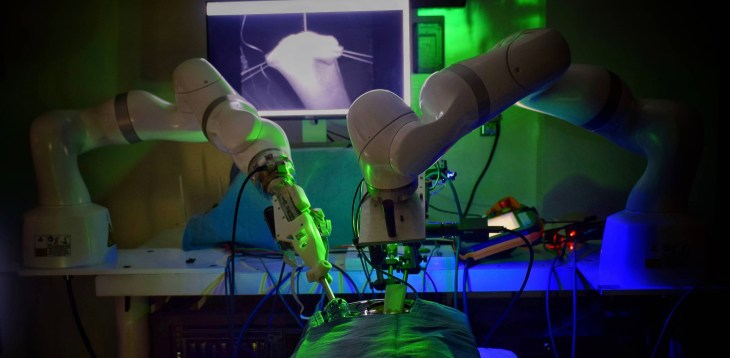Researchers at Johns Hopkins this week issued a report noting that their Smart Tissue Autonomous Robot (STAR) system has completed laparoscopic surgery on a pig tissue without human guidance. The surgery, which involves the connecting of two instestinal ends, was performed successfully on animals, with a “significantly better” result than those performed by humans, per the team.
There are a number of hurdles to overcome in order to fully automate a procedure like this. Chief among them is the fact that the malleability of tissue (human, pig and otherwise) gives it a fairly unpredictable nature that can be extremely hard to program for.
Human surgeons have long learned to work with it, but it can be much more tricky for their robotic counterparts. The robotic system builds on a 2016 system that already did a good job performing the surgery on pig patients, but required assistance, including human guidance and a large incision. Three-dimensional machine vision was used to build an algorithm for STAR’s guidance system.
“What makes the STAR special is that it is the first robotic system to plan, adapt, and execute a surgical plan in soft tissue with minimal human intervention,” the paper’s lead author, Hamed Saeidi, said in a release.
The system’s creators believe that the technology could be used to perform such procedures with higher accuracy and repeatability. There’s been a massive uptick in interest and funding around robotic surgeries in recent decades for their ability to help level the playing field for access to what have traditionally been regarded as highly specialized surgical procedures
